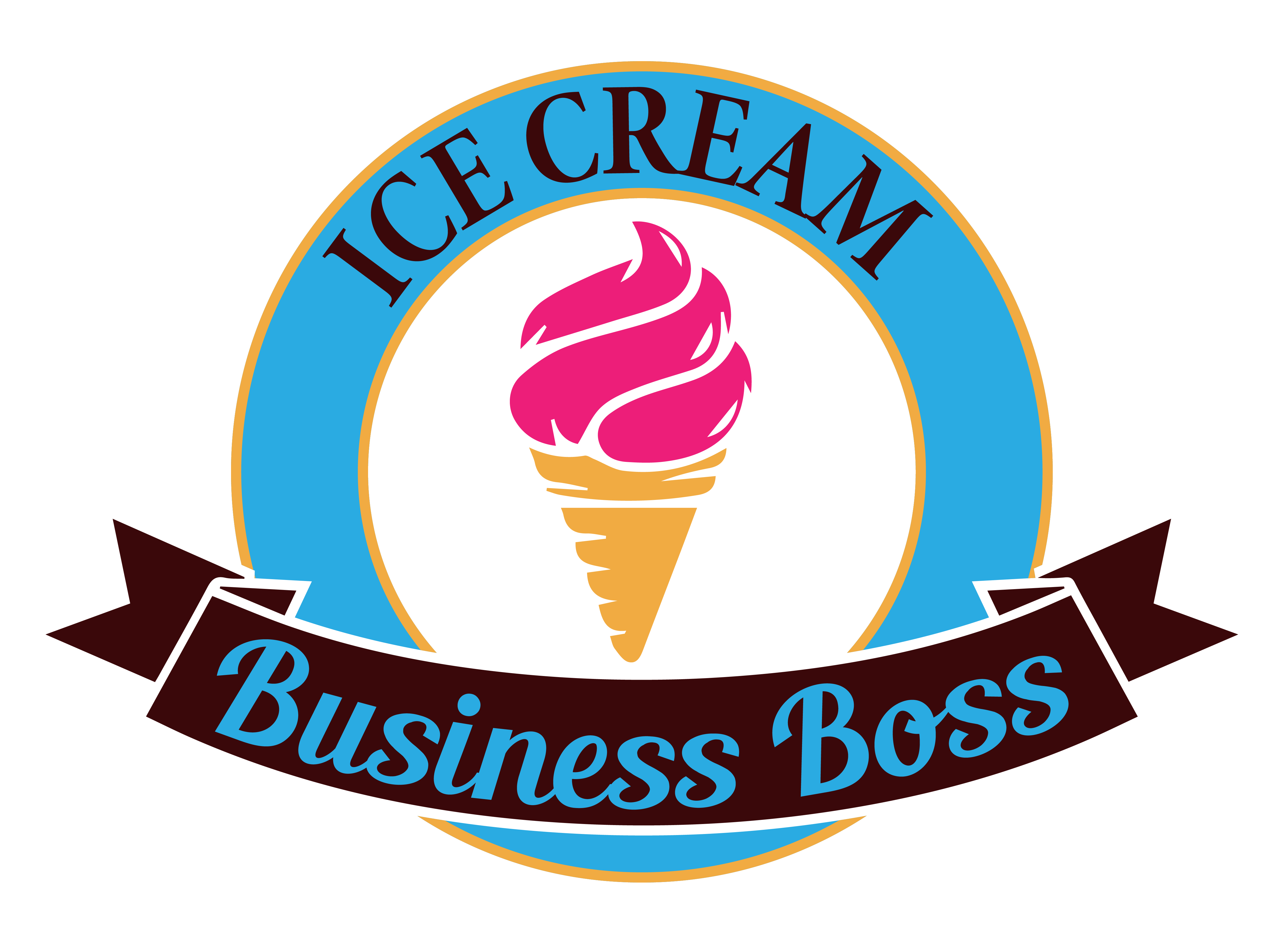Ice cream has a particular place in the hearts of both young and old people, providing pure joy with every delicious bite. However, behind every scoop is a dynamic and competitive business that necessitates careful planning and strategic thought. Entrepreneurs embarking on the frozen treats industry must know that a well-crafted business plan is more than simply a road map to their aspirations; it is the key to unlocking the potential for significant earnings and long-term growth.
To effectively enhance ice cream profits, you should start by incorporating market analysis, competitive strategy, pricing tactics, operational efficiency, and marketing approaches. These elements work together ideally to guarantee the ice cream business venture’s optimum growth and profitability.
In this article, we will look at the key components of an ice cream profits business plan template that may turn a simple passion for ice cream into a thriving business. So, whether you’re a seasoned entrepreneur or a budding ice cream connoisseur, keep reading to learn how to efficiently boost your ice cream profits with a well-crafted business plan template.
Market Analysis: Understanding Consumer Needs and Trends
The dynamic ice cream industry is a prime example of the significance of the market study in creating the framework of a thriving business plan. An in-depth understanding of customer needs, inclinations, and shifting trends is crucial in this always-changing environment.
Visionary businesspeople can identify untapped markets and exploit emerging opportunities by conducting thorough market research. Examining factors such as demographic preferences, flavor trends, dietary restrictions, and regional differences gives priceless insights, establishing the framework for creating a product portfolio that strongly appeals to the target market.
The practice of market analysis also includes discerning possible competitors and skillfully assessing their strengths and weaknesses. With this information at hand, a strategic plan may be created, differentiating the ice cream business from its rivals. By spotting market inefficiencies, one might pioneer novel products that satisfy unmet needs, creating a distinctive brand identity and encouraging client loyalty.
Understanding changing trends is important because it gives businesses the flexibility to adjust their strategies to fit shifting consumer tastes. Such consumer demand responsiveness protects sustainability and long-term profitability. Identifying a niche that complements the ice cream company’s primary strengths and differentiators requires a grasp of the competitive landscape.
Competitive Strategy: Carving a Niche in the Frozen Realm

The creation of a clear competitive strategy is a crucial cornerstone in the complex ice cream market landscape, which is marked by its diversity and fierce competition. This plan must be carefully crafted to succeed in the face of the industry’s intricacies and is not just a typical playbook. The core of this strategic strategy is the ability to carve out a distinct niche that effortlessly connects with the target market while highlighting the special advantages that the company offers.
Being able to stand out in a sea of choices is a valuable asset. The competitive strategy serves as a compass to direct an ice cream business towards a specialty that sets it apart from the competition. This could involve a wide range of tactics, such as creating hand-crafted flavors that inspire nostalgia and craftsmanship or methodically accommodating dietary restrictions and preferences. The use of creative serving techniques that grab clients’ imaginations as well as taste receptors is equally vital.
However, a strong competitive strategy goes beyond differentiating; it necessitates a thorough understanding of the environment in which a business works. Analyzing rivals’ strengths and weaknesses is necessary for this.
A firm can gain perspective by analyzing factors including pricing structures, product portfolios, customer interaction strategies, and creative marketing strategies. They might strategically position themselves in the market by taking advantage of gaps and buried demands that rivals might accidentally overlook thanks to their bird’s-eye vision.
Pricing Tactics: Striking the Perfect Balance

It takes a masterful balancing act to navigate the complexities of pricing in the world of ice cream products, where financial stability and customer satisfaction dance in perfect unison. It takes a complex orchestration of factors that come together to define the price points that attract clients and support a thriving business to reach this equilibrium.
The art of pricing entails careful calibration that is based on two fundamental principles: catering to the production’s financial realities while also striking a chord with the target market’s wallets. Finding this equilibrium requires a thorough comprehension of many different dimensions.
Businesses must take into account the caliber of the raw materials, the complexity of the manufacturing procedures, and the overhead expenses that come with any venture. While aiming for affordability is important, it’s also crucial to make sure that the pricing covers costs associated with production and leaves room for profit, ensuring the venture’s viability and expansion.
The complexity of pricing, however, goes beyond a single strategy. Flexible pricing methods that address the wide range of consumer segments are required by a dynamic market. This inclusivity is demonstrated by a tiered pricing structure that provides choices ranging from affordable solutions to luxurious, decadent ones. This varied pricing strategy appeals to consumers’ various preferences and financial capacities in addition to growing the client base.
It requires a deeper grasp of the market environment to incorporate these varied pricing tiers. Identifying the preferences and actions of various client groups, from those looking for cost-effective options to those willing to splurge for a deluxe experience, is required. Businesses may foster brand loyalty and access previously undiscovered markets by catering to these various appetites through a carefully developed pricing spectrum.
Operational Efficiency: Streamlining Production and Processes
A prosperous ice cream business is built on a solid foundation of operational efficiency. A silent force orchestrates the delicate balance between cost-effectiveness and higher quality standards; he or she is the unsung hero working behind the scenes. Simplified production procedures combined with careful attention to detail produce a symphony of advantages that reverberate across the whole business ecosystem.
Several strategic decisions that companies make to boost productivity and improve the customer experience pave the way for operational efficiency. For example, utilizing contemporary technology speeds up production and guarantees consistency and quality in each scoop.
By facilitating a seamless transition from one stage of production to another, this technology infusion supports well-structured workflows, avoiding bottlenecks and maximizing resource use. At the same time, incorporating strict quality control procedures strengthens dedication to excellence and ensures that each frozen treat satisfies the high standards established by the company.
A comprehensive strategy for operational efficiency extends beyond manufacturing to supply chain management. Prudent choices must be made in this situation, such as maintaining ideal inventory levels and skillfully balancing availability and waste.
A collaboration that strengthens the dependability of sourcing and promotes a sense of partnership that extends beyond transactional bounds is the result of effective supplier relationship management. Businesses may realize cost savings that ripple across the financial system by reducing waste and tightening supply chain complexities.
Operational efficiency has implications that go far beyond cost control. Every penny of cost that is saved builds up as a resource pool that can be used to fund expansion and profitability. When resources that were previously trapped in inefficiencies are used to support marketing activities, research and development projects, and customer engagement programs, they gain new vitality.
Explore the world of ice cream business plan by visiting this article here.
Marketing Approaches: Creating Buzz and Building Brand Loyalty

The art of marketing has transformed into a sophisticated tapestry of innovation and engagement in the always-changing digital environment, helping to create brand identities and cultivate customer loyalty. In this dynamic environment, a company’s toolkit goes beyond simple advertisements to include immersive experiences and direct interactions with customers.
The world of websites, online ordering platforms, and social media platforms is crucial to this shift. These channels, teeming with digital life, act as platforms for companies to communicate with customers directly.
Customers become voyeurs of craft as a result of the dynamic content-rich marketing techniques that unfold, providing enticing glimmerings into the making process and sharing behind-the-scenes storylines. In addition to arousing interest, the introduction of limited-edition flavors coupled with aesthetically compelling storytelling entices customers to return for more.
However, the art of digital marketing goes beyond specific platforms and bleeds into the world of group storytelling. Collaborations with neighborhood organizations, influencers, and events weave an authentically woven tapestry of brand presence. These partnerships not only increase reach but also provide the brand with a sense of community involvement, positioning it as an important player in the local narrative.
It appears that the manifestation of gratitude to repeat customers is loyalty programs, discounts, and special promotions. In addition to being purely transactional, the construction of these incentives involves the development of durable connections. These tactics give new meaning to the adage that client loyalty is not just a byproduct but a carefully tended garden where each act of appreciation plants the seeds for long-term productivity.
The Synergy of Elements: Achieving Optimal Growth and Profitability
The process of creating a thriving ice cream business is not a solo undertaking but rather a symphony that seamlessly combines several elements. Although market research, competitive strategy, pricing strategies, operational effectiveness, and marketing strategies may all seem like separate issues, it is their seamless interaction that creates the foundation for development and profitability and gives the business its life and purpose.
A thorough awareness of the market sits at the heart of this synergy. Market analysis is a dynamic examination of consumer trends, tastes, and aspirations rather than a static snapshot. With this knowledge, business owners can create strategies that appeal to their target market and guarantee that their products and services are in line with rising consumer expectations.
The business is then led through the competitive landscape by a clearly defined competitive strategy. The company is guided by this strategic compass to carve out a distinct niche that not only stands out but also connects with customers on a deeper level. Pricing strategies find their footing in this market sector, carefully calibrated to draw in a wide range of clients. These strategies combine perceived value with price to create an alluring offer that appeals to customers from all socioeconomic backgrounds.
The key to converting strategic objectives into practical results is operational efficiency. It’s not just about cutting costs; it’s about mastering the procedures that guarantee quality and consistency, two factors crucial to consumer happiness.
Then, marketing strategies magnify this satisfaction, creating a buzz that encourages foot traffic, attracts online involvement, and results in more sales. Through tempting promos and specialized experiences, loyalty-building initiatives support this dynamic cycle of consumer recruitment and retention.
These elements work together to create a virtuous cycle of growth. The goal of the synergy is to create a comprehensive ecosystem where each element works in harmony with the others to advance the ice cream industry, not only to combine separate strategies. Each iteration of this cycle of insight, distinctiveness, attraction, and satisfaction improves brand stature, client connections, and the overall bottom line.
Frequently Asked Questions
Why is market research important for an ice cream company plan?
Market research is necessary because it gives information on customer preferences, trends, and the competitive landscape. Understanding your target demographic and discovering market gaps allows you to efficiently design your offerings to match customer requests. This data informs strategic decisions that lead to increased profitability and growth.
How does operational efficiency affect the profitability of an ice cream shop?
Production procedures are streamlined, prices are reduced, and product quality is consistent. You may distribute resources more efficiently by streamlining operations, avoiding waste, and properly managing inventory. This improves not only profit margins but also customer happiness and brand reputation.
How important is differentiation in a competitive ice cream market?
In a competitive ice cream market, differentiation is critical. With a well-defined competitive strategy, you can carve out a distinct niche and appeal to specific client categories. Differentiation, whether through unique flavors, dietary options, or inventive serving methods, develops consumer loyalty and sets you apart from the competition, increasing profitability.
The information provided by IceCreamBusinessBoss.com (“The Site”) is for general informational purposes only. All information on the Site is provided in good faith, however, we make no representation or warranty of any kind, express or implied, regarding the accuracy, adequacy, validity, reliability, availability, or completeness of any information on the Site. Under no circumstance shall we have any liability to you for any loss or damage of any kind incurred as a result of the use of the Site or Reliance on any information provided on the Site. Your use of the Site and your reliance on any information on the Site is solely at your own risk. This blog post is for educational purposes only and does not constitute legal advice. Please consult a legal expert to address your specific needs. Terms and Conditions.

Hi! I am Shawn and I am a happy individual who happens to be an entrepreneur. I have owned several types of businesses in my life from a coffee shop to an import and export business to an online review business plus a few more and now I create online ice cream/gelato business resources for those interested in starting new ventures. It’s demanding work but I love it. I do it for those passionate about their business and their goals. That’s why when I meet a ice cream/gelato business owner, I see myself. I know how hard the struggle is to retain clients, find good employees and keep the business growing all while trying to stay competitive.
That’s why I created Ice Cream Business Boss: I want to help ice cream and gelato business owners like you build a thriving business that brings you endless joy and supports your ideal lifestyle.

